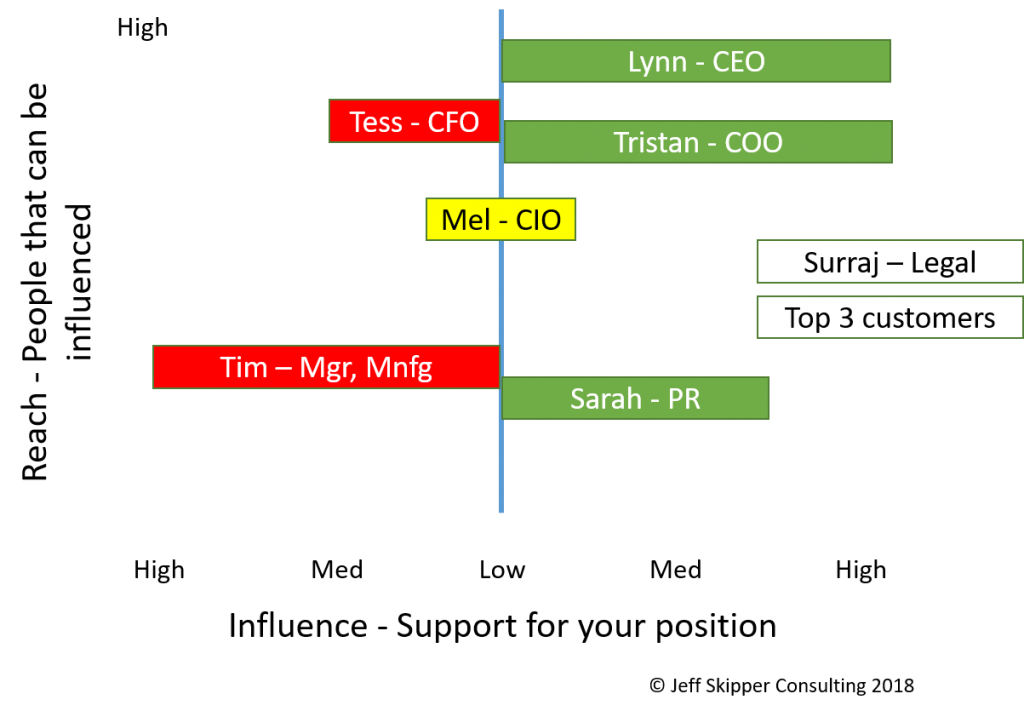Dawn has some fantastic ideas. She is the regional GM for an IT services company, having fast-tracked from a tech role in just four years. She figures she can add another $2M to the company’s bottom line if they add two service options that clients keep asking for. Sounds like a no-brainer, doesn’t it?
But Dawn’s no dummy. She knows her ultra-conservative VP will block the idea. He avoids anything that isn’t pre-approved by the CEO for fear of rejection and bad karma. Dawn does not have a voice at the leadership table, so she came to me. What to do?
When I bring up office politics, people groan. In terms of who to hang out with, the political player is ranked somewhere in the vicinity of used car salesman and movie villain.
But what do politicians do? They use influence to achieve a result. By that definition we are all political players, some with more reach than others. The terrain of influence is real. Ignore it to your detriment. Map and navigate it to make the right things happen.
Changing Your Mind
Influence (and politics) is like the force – you can use it for good or evil. If you can carry a conversation, you can build influence. How? The basis of influence is trust, and we trust those we know, who are similar to ourselves, who have shared history. We bridge those elements through dialogue. I advised Dawn to focus on what she already knew how to do: Connect with people. The only question was “Who?”
Think about something you need to change: Move people onto a new system or to a new location, restructure a division, sell an idea, shut down a money-loser, change a peer’s perspective someone’s attitude, or convert customers to your brand.
Now map the terrain of influence:
- Determine who’s voice matters (or could matter) to those that need to be influenced? List them all
- Consider who will care about the result of what you want to do? Who will benefit? Who will be threatened?
- Rate their influence (power, credibility, attractiveness) – both positive and negative, as low, medium or high; put their names in the margin if you’re not sure
- Rate their reach (how many people can they influence?) – low, medium or high

Now you (and Dawn) can begin building the influence needed to get the result you need:
- Identify interests. What will appeal to each person personally? How do their values line up with your vision? Do your homework by asking peers and assistants.
- Solidify your supporters. Meet with them to ensure your interests are aligned. Tell them what support you need.
- Convert your convertibles. Which stakeholders need more information. Who is open to persuasion?
- Understand your objectors. You have to do your due diligence. Meet with the detractors as well to be sure you haven’t misunderstood their position. Try to win them over with facts and the weight of your supporters. (I call this ‘Borrowed Credibility’)
- Send in your champions. Supporters can be used to rally more supporters and convert others. Don’t throw them into losing situations.
- Take action. Once you have enough support to overcome opposition, make your initiative public.
Remember, if you build it, they won’t necessarily come. Implementing change is about influence, power and politics. Leaders are differentiated by the way they use the terrain of influence. Strategically building and applying relationships to move initiatives forward is a critical skill.
For more on influence and how to use it, check out my other article “Influence: You’ve got it. Now What?”
Thoughtfully yours,
Jeff Skipper



